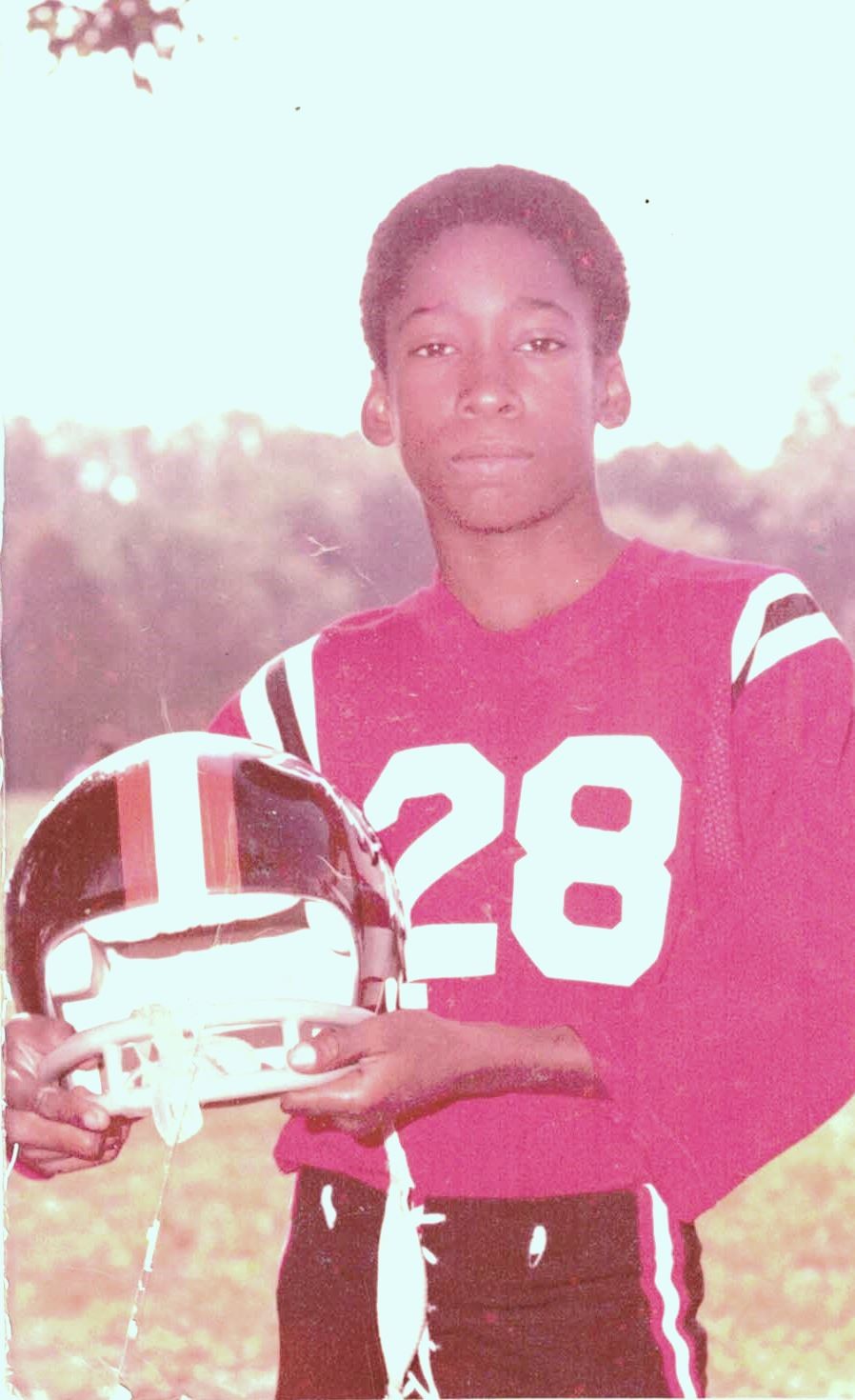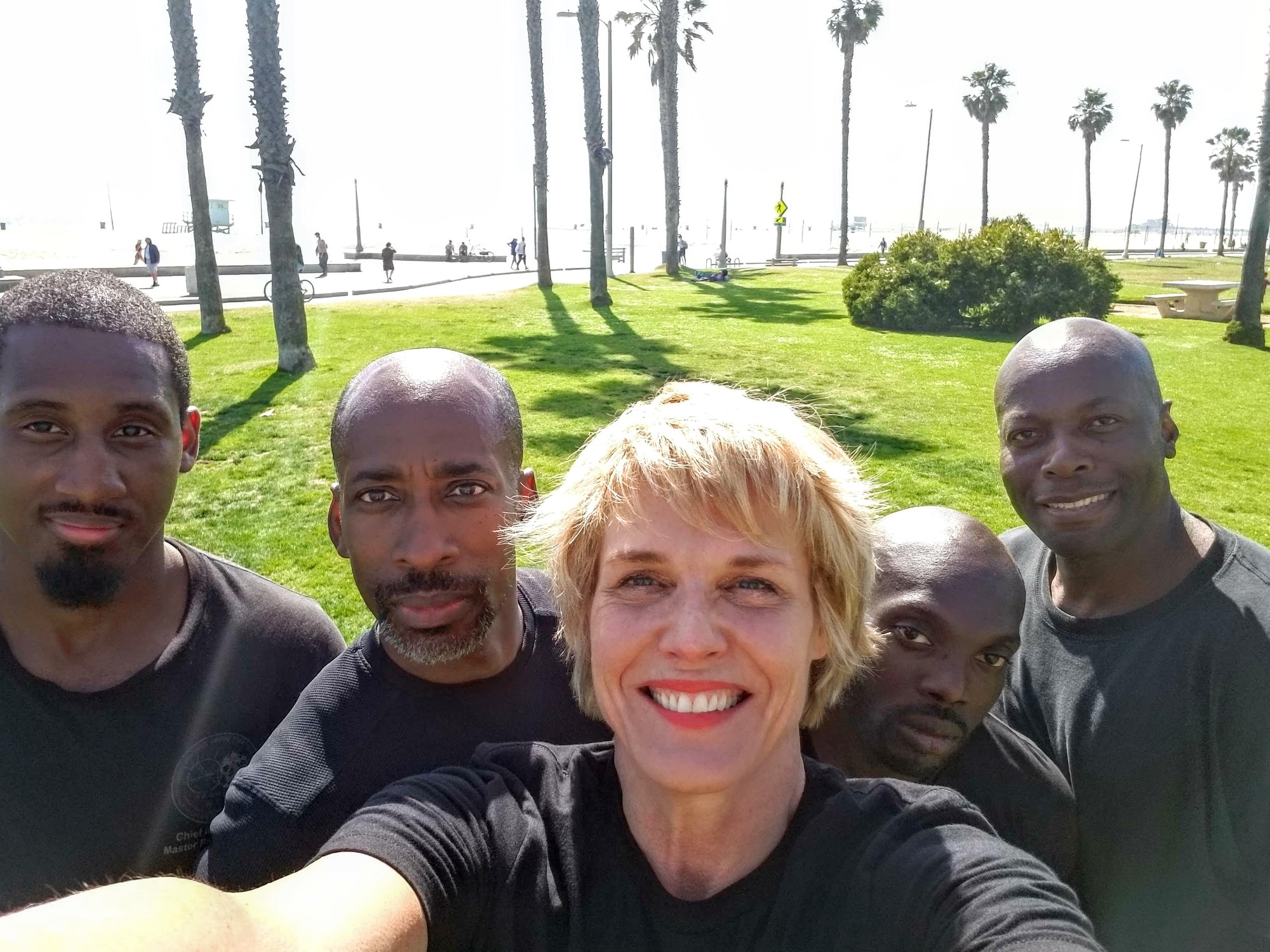The Tong Leong School of Martial Arts is the last martial arts academy many would expect to find in the privileged community of Bethesda, Maryland, where most youngsters are accustomed to easy lives of high-quality schools, first-class sports opportunities, and bright futures. Unlike the pervasive “McDojos” that serve up black belts once you’ve paid a certain amount of money or spent a specific number of months at different ranks, at the Tong Leong School you earn what is around your waist with years of hard work and no set timeline. And that is on purpose.
The founder and head of the school, Paul Thomas, a ninth-degree black belt in Tzee Wai Kuen and Tong Leong, has been practicing the martial arts for over thirty-five years, starting as a youth, when he lived in the rough and tumble Dunlap and Delaney Apartments in the projects of Perth Amboy, New Jersey. Abandoned by his biological father, but happily secure in his tight family of his mother and stepfather, Thomas is a classic study in the rewards of gritty perseverance.
Taking on a paper route before school at age eleven, Thomas doesn’t know what it’s like not to work hard—and he only quits when the job is done. Although he had to beg his mother to let him take on various jobs throughout his teens—from working in a movie theater, to setting up banquets at the Sheraton Hotel, to working as a waiter at Red Lobster, to cleaning parking lots— Thomas never let his grades slip and was a popular three-sport star athlete right through high school graduation.
His parents, who also worked several jobs during the day and at night (his stepfather, Climmie, as a maintenance man in the projects, and his mother, Sandra, in a variety of jobs including accounts receivable and community activism), were role models of fortitude and no whining. When they began to clean nearby office buildings at night for extra money, Thomas insisted on helping out. When his parents dropped him off at one building as they went to another, he was intent on seeing how quickly he could get his portion of the work done so that they could all end as soon as possible.
When Thomas was twenty-one and learned from his girlfriend, Tanita, that she was pregnant, he worked even harder so that his parents wouldn’t have to pay for his new responsibilities. Although money was tight and the odds of them making it were slim, Thomas and Tanita moved into their own apartment. He got a good job in the prison system, worked as many shifts as possible, and saved every penny so that the couple could stand on their own and give their baby daughter, Quanisha, a stable life.
Thomas gradually built his reputation not just as a disciplined worker at whatever he set out to do, but also as a model of fitness, winning a national body-building contest, The Naturals, in which no steroids or other performance-enhancing drugs were permitted. Eventually, he moved into training other people full-time and was then recruited by the Congressional Country Club in Bethesda, often home to golf’s US Open and the playground of numerous presidents, celebrities, and powerful business leaders. There, Thomas created a boot camp that is the most popular offering in their fitness center.

Although it would be easy to settle in to the security and distinction he has earned and simply continue as he is now, Thomas has begun to focus on passing along the life lessons he has gotten from the martial arts, partly because they gave him such a good base and partly because the area where he lives is in real need of the same values he believes create the perseverance and grit that have brought him so many positive results.
Today, four men and one woman are sweating their way through a two-and-a-half-hour training session in which Thomas enforces discipline and repetition of the fundamentals. “Get the stance right; that’s your base, C.J. Toes out, Demetrius. Do it again,” he says. “Yes, sir,” is the response, hundreds of times, followed by a respectful bow. Later, Thomas explains to me that as rigorous as his school is, the real goal is to teach people how to be a martial artist in all parts of their lives.
“It takes you to another level of discipline, focus, and persistence,” he explains, “and that’s what I used to get me out of the projects and to achieve my goals. The martial arts humble you and teach you that while you might be a higher belt, someone with a lower belt can be better than you at something, and you can learn from them. You are never finished here—just like in life, you can’t just give up because something is hard.”
The martial arts humble you and teach you that while you might be a higher belt, someone with a lower belt can be better than you at something, and you can learn from them.
Thomas’s secret to success is exactly what the research has found to be effective when it comes to being persistent when you have a big goal. His goal was to get out of the projects and out of Perth Amboy, a goal he set when he was young and his mother drove him to see the big homes in Asbury Park. “I saw the gleam in her eye, and I knew she was dreaming as much for me as she was for herself,” he remembers.
Struggling well
“She made sure I saw things that lit me up and made me aware of what I could strive for. She took me to the ocean in North Carolina. No one in the projects saw the ocean! She was friends with people from all walks of life and of all colors. She showed me that you can build relationships with anyone, regardless of your background. Through her, I learned to work hard and not to quit, and she made sure I was surrounded by people in sports and the martial arts who gave me the tools to become a man who could carry himself with dignity and humility.”
Why people like Paul Thomas can find ways to thrive and work hard toward personal achievements, regardless of being born without the advantages of kids, say, in Bethesda, is a question that has been studied for hundreds of years by philosophers, psychologists, and motivational speakers. In 1907, psychologist William James called upon his peers to find out why some people were able to dig deeper than others to succeed while others simply languished without tapping into their potential strengths. James wrote to his peers in Science magazine, “The human individual lives usually far within his limits; he possesses powers of various sorts which he habitually fails to use. He energizes below his maximum, and he behaves below his optimum . . . the habit of inferiority to our full self—that is bad.”
The human individual lives usually far within his limits; he possesses powers of various sorts which he habitually fails to use. He energizes below his maximum, and he behaves below his optimum.
Positive psychology’s Chris Peterson was fond of saying that thriving people are good at “struggling well.” As we all know, life is full of challenges, particularly if we choose to set grand goals, but what separates people who don’t have grit from people who do is often this issue of working hard and overcoming difficulties without losing focus, equanimity, or passion—that is, struggling well. So, if you want to cultivate grit but you don’t have a constructive relationship with discomfort, failure, and delayed gratification, it’s imperative to find ways to make your peace with these conditions.

If you want to cultivate grit but you don’t have a constructive relationship with discomfort, failure, and delayed gratification, it’s imperative to find ways to make your peace with these conditions.
One of the most intriguing findings in Angela Duckworth’s research on grit is that high-grit people hate hard work as much as those who don’t have high grit. High-grit people simply accept hard work as the price they must pay to get where they want to go, and so they find ways to do it. As the late boxer and humanitarian Muhammad Ali put it, “I hated every minute of training but I said, ‘Don’t quit. Suffer now and live the rest of your life as a champion.’” Duckworth’s research on the finalists in the National Spelling Bee found that the boys and girls who advanced the farthest in the Bee were not the ones who played word games on the computer or who were quizzed by their parents, but the ones who spent time in solitary study of words and their etymology. These high-achieving children simply accepted that mastery of words meant there were going to be occasions where they had no choice except to isolate themselves with study guides and log the necessary hours without distraction.
High-grit people hate hard work as much as those who don’t have high grit. High-grit people simply accept hard work as the price they must pay to get where they want to go, and so they find ways to do it.
Bob Bowman, the only swim coach Michael Phelps ever had, is fond of saying that there are no secrets to Michael Phelps’s legendary greatness. He notes that Phelps never missed a workout at the pool between the ages of twelve and eighteen, building the foundation of “everyday excellence” without any shortcuts. And with a nod to the absence of “selfie grit” in Phelps and other champions who show up at cold pools for punishing workouts morning, noon, and night, Under Armour aired a line of commercials leading up to the 2016 Rio Olympics—Phelps’s last—with the tagline “It’s what you do in the dark that shows up in the light.”

Three Hard Things
One of the most widely embraced exercises from positive psychology is designed to increase people’s feelings of gratitude and happiness by having them count their blessings at the end of the day. Three Hard Things is a takeoff on that idea, but this exercise is about listing the three hardest things that were done that day. Research has found that we scan our day at the end of every day for what we did that was hard because those are the things that build our self-confidence and experience of mastery—and when we feel this way about ourselves, we’re more likely to persevere toward cherished goals. This is an exercise worth doing regularly, if not nightly.
Write down the three hard things you did today. Explain what made them difficult and how you did them, which includes identifying the strengths you used.
Feel free to share in the comments, or write in your journal!

A special thanks to Paul Thomas for allowing me to share your gritty journey. And click here to connect with Paul on LinkedIn.
This post includes excerpts from Caroline Adams Miller’s book “Getting Grit,” which has numerous footnotes supporting the research cited here. Click here to download the introduction and first chapter of “Getting Grit.”
If you’d like to learn more about upping your grit game, feel free to direct message me or leave a comment below.
And if you enjoyed the post, please click the thumbs up icon to let me know! ??
Photo credits (in order of appearance): Jason Briscoe on Unsplash, Paul Thomas (at age 9), and Ricardo Estefânio, Steven Lelham and Zen Photographer on Unsplash
Tags: #Grit, #GettingGrit, #AuthenticGrit, #Happiness, #WiseInterventions, #PositivePsychology, #Happy, #Journaling, #Coaching, #Coach, #Gratefulness, #Mindfulness, #Exercise, #Flourishing, #Gratitude, #Altruism, #SelfieGrit, #MartialArts, #Perseverance, #Goals

